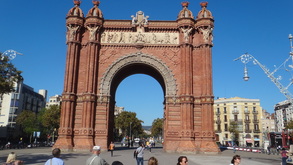 We arrived in Barcelona late in the afternoon, and the first thing that struck me was the airport. I didn't know what to expect with Barcelona. I'd never seen pictures or conjured up images of what it would be like. But, I was really impressed.
The airport was clean, modern, and cultural. That ended up being a good pulse of the Barcelona experience. I loved the airport, and we'd seen quite a few!
We took a bus (again, very clean and modern) to meet our host, Francois, and his girlfriend. They had a lovely apartment in a place with a doorman (new for us!), and they were so wonderful to us. I had fun trying to practice my French with Francois, and Chris utilized his Spanish with both of them.
It rained hard that first night and the next day. We had our first tapas dinner (at about 9pm, which is normal there) and then just headed back. The second day, we walked around a bit, shopped, tried more food, and found a great, cheap place for breakfast pastries. Yum! We also found out that the subway system was really simple to navigate.
On our second day, we wanted to try out the Fat Tire Bike Tour once again (the first time was in Paris). It was so fun and informative! Our first stop was the Arc de Triomphe. Yes, Barcelona has an Arc de Triomphe, too. Not just Paris, where it's best known! But, several cities actually had an Arc de Triomphe to parade their returning soldiers through when victorious.
The Barcelona city council had plans to build another structure in that spot, but the citizens were so distraught about the idea and forced another decision. The Arc was plan B. What was the city council's original plan, you might ask? Oh, it was just a tower by Gustav Eiffel. He said "no problem" and went to the Paris city council, where it was ultimately built.
We also learned that Barcelona isn't technically in Spain. It's actually the capital of Catalonia, and that's actually a really big deal. The Spanish and the Catalans have long been feuding, and the Catalans view themselves as autonomous from Spain. There's even a Catalan language, although it was suppressed by the Spanish after they won the revolution. Learning things like this made us feel glad we now knew it, but a little stupid for not knowing it before.
The palace was really cool (I love a good palace!) where Ferdinand II of Aragon Isabella I of Castille resided in 1469, and then we got our first taste of Gaudi. There is this gorgeous park, Parc de la Ciutadella, with ornate fountains and a zoo. They like to claim Gaudi helped design the fountains, which he kind of did, but he was only an apprentice then. So, he basically just helped build what was instructed.
 Then, we stopped at the Barcelona beach for sangria and drinks. That was a surreal experience just lounging at a beach cafe with other tourists. We didn't really interact with many other tourists in our travels, so it was interesting to hear their stories and plans while sharing a pitcher of sangria.
The beaches are entirely man-made, created for use during the 1992 Summer Olympics in Barcelona. So beautiful, and a sunny break from the downpours we had experienced!
Now let's get back to Gaudi. We, of course, stopped by the Sagrada Familia--Gaudi's masterpiece. Gaudi, born in 1852, was a Catalan architect who helped forge modernist design. He paid tremendous attention to details and angles, and created several new types of materials, including a ceramic pieced-together collage. Gaudi had a passion for religion and the people of Catalonia.
He died during the creation of the "Cathedral for the Poor" (Sagrada Familia)--his intended masterpiece--and raised money from wealthy citizens. The church remains unfinished, and Gaudi's written plans were burned, but construction is underway for completion in 2026. Despite Gaudi's many attempts to get Roman Catholic backing and support, which were rejected, Pope Benedict decided to consecrated the famous church in 2010. He said that before the consecration, the "basilica" had just been a pile of rocks, and not it was a church. That didn't go over too well with the Catalans.
Gaudi's design, and this structure in particular, was unlike anything I'd ever seen before. Bright colors, creative textures, and inventive designs--not to mention the enormous size--made me awestruck. And although Gaudi followers are supposedly following through with his intended plans for completion, the new construction looks entirely different. That was bizarre and a little startling to see the sharp differences.
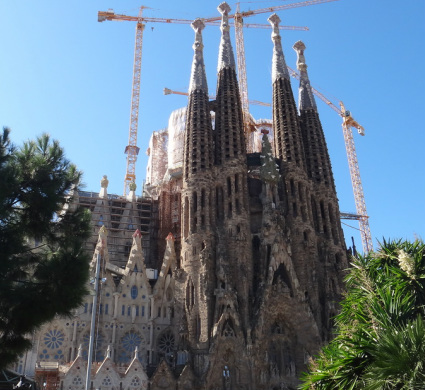
La Sagrada Familia (front side); newer construction is on the left
 Later that afternoon, we went to the "Gothic Quarter," and that was spectacular. That's the old city center of Barcelona, with buildings dating back to medieval times. Near that area is a lot of shopping--I looked in more stores there than anywhere else during the trip combined! Finally, we had dinner at an outdoors tapas place nearby.
The next morning, we wanted to visit the Park Guell before our train left for Madrid. This was another Gaudi creation (there are several) dedicated to his prime benefactor, Eusebi Guell. It was like a little village and it felt very inspiring. We got to the park just before it opened, so we had about 5 minutes of peace until the tour buses arrived and hundreds of people poured out.
Gaudi's home was nearby, so we walked there. In case you can't tell, I found Gaudi's designs really fascinating, and Gaudi was so meticulous that he even designed the walkways!
We had a fantastic time in Barcelona, and then we headed to our last stop...Madrid.
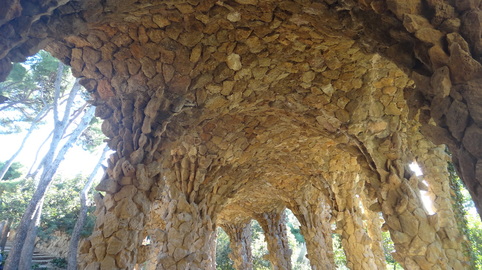
The walkway near Gaudi's home
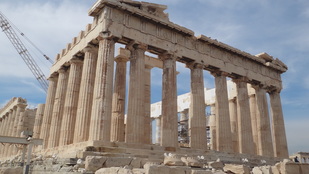 The first part of our trip in Athens was obviously marked by riots, which severely limited our ability to move around the city--public transportation systems were either completely shut down or had flaky schedules, shops were closed, and parts of the city were just too risky.
But, after a few days, we were able to see some of Athens' most famous sites.
Of course, we went to the Acropolis. The Acropolis is the highest point in the city (490 ft above sea level)--a flat-topped rock that towers over Athens, and on which the Parthenon rests. The earliest settlement on the Acropolis dates back to 6th millenium BC and then became a sacred temple to Athena in 6th century BC. We learned at the nearby Acropolis Museum (a must visit) afterwards many interesting things, but here's 3 of them:
1. The Acropolis has undergone several transformations and devastation (fires, wars, etc). Incredible, lavish temples would be built for a god (usually Athena) or a king, they would be plundered or destroyed, and then rebuilt or reworked. It was a cycle over and over. So many precious things ruined by greed, war, or simply time.
2. Like we'd seen at other historical monuments, key statues on the Acropolis were replicas. The actual ones are preserved and restored inside the museum.
3. The British are thieves. Aside from the Parthenon perched on top of the Acropolis, there is also the Erectheion (used to be the Old Temple of Athena). On it stand six draped female figures (caryatids). Well, there were six. But, Lord Elgin stole one of them late one night, and then it was later sold to the British Museum. The British Museum still won't give the 6th caryatid back to the Greeks, despite their constant requests. We saw similar acts of "finders, keepers" attitudes in other parts of our travels.
Another word to the wise, the Parthenon is usually under construction. I know you'll see pictures of the Parthenon with no cranes, but that's probably not what you'll see. This was my 2nd time at the Acropolis in 7 years, and it's still under construction.
Although the Parthenon is certainly the most famous site, the Acropolis also has several other monuments and artifacts near it. My favorite was the Theatre of Dionysus.
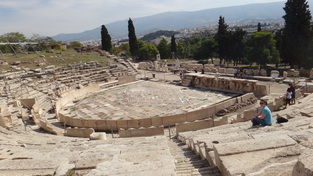 The Theatre of Dionysus, erected around 6th century BC, is probably the oldest surviving theatre anywhere. Dedicated to the God of wine and Patron of drama (Dionysus), festivals were held in this theatre, and dramatists like Sophicles and Euripedes competed with their works.
The theatre is being restored, since not much from the original theatre is remaining. It was such a cool feeling, though, to sit on the stone and just picture the dramas unfolding on that open air stage. In those days, there were only male actors allowed to perform, and some were actually killed for dramatic effect.
There is one more theatre nearby--the Odeon of Herodus Atticus. It's very well preserved (and was just restored for use during the Athens Olympics), and was built in 161 AD by a very rich man (Herodus Atticus) in memory of his wife.
Herodus Atticus also funded the Panathenaic Stadium renovation in 140 AD, where athletic games were played and the first modern Olympic Games were later held in 1896. It's one of the oldest stadiums in the world and is built entirely of white marble. Still in excellent condition, it was incredible to walk around the 50,000 seats and on the center field. Of course, we did an obligatory "race" on the field. Chris won, but let's not talk about that.
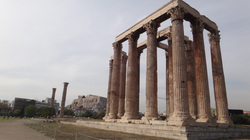 Temple of Zeus (remaining columns)
A short walking distance away from the Acropolis stands the Temple of Zeus. Some columns still remain, and they were HUGE. It's absolutely humbling to stand next to these 100ft+ columns that ancient Greeks built in ~450BC. Although it used to house a statue of Zeus, I think these remaining columns alone are incredible. One column actually tumbled down in a heavy thunderstorm almost 100 years ago...and they left it on the ground. That column survived thousands of years and wars, but a rainstorm took it down, and there it stays.
We took a little "hop on off" (what we liked to call them) train that went around to many sites on our last day. That was fun, although schedules were a little weird, and I'd recommend it to those wanting to see the popular historical sites.
Leaving Athens was hard because we really had a GREAT time, fantastic food, and a gracious host. The food was the best we had anywhere, plus we got home cooking from Ephi! :) We also had a chance to recharge and just enjoy the city at our own pace. We didn't get to the Islands this time because of the riots and budget, but we will definitely go back to Athens and see the Islands sometime soon!
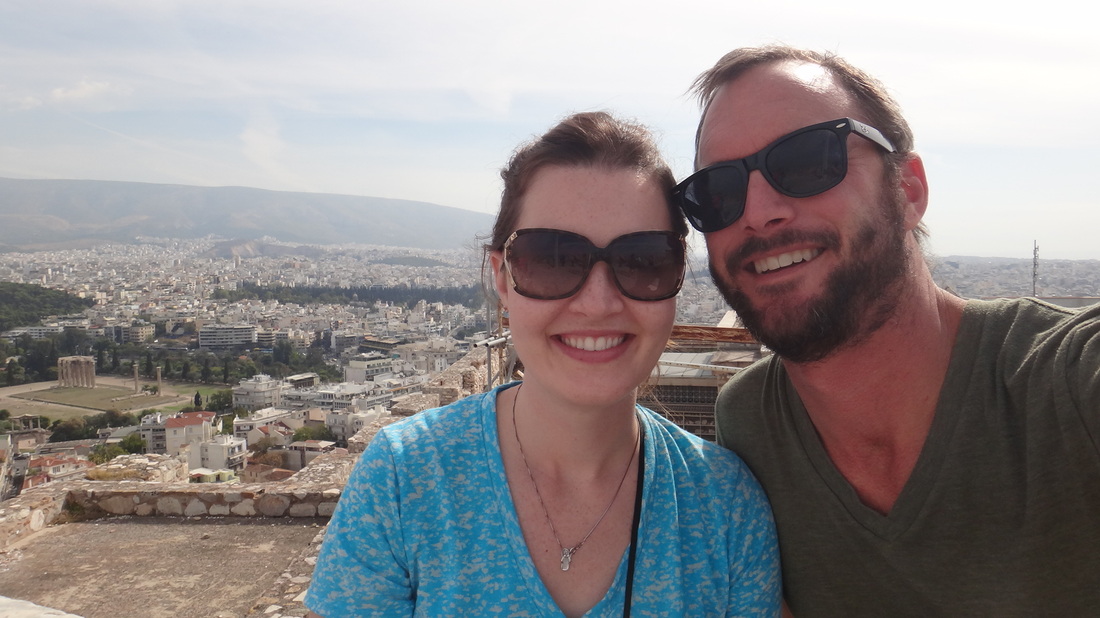 View from the top of the Acropolis
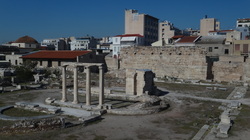 After sleeping for several hours--6am-11am--we awoke to a fantastic meal from Ephi. This would be our first taste of the incredible food served in Greece. We decided to try and walk to Monastiraki, about 3 miles away, for the evening. Monastiraki is very close to the Acropolis and Plaka, which basically form the heart of Athens. There are historical monuments, flea markets, and delicious Greek restaurants. However, the riots in Athens started a few days before we arrived. As we walked, Ephi pointed out all the shops that were closed and afraid to stay open during the chaos. Many places in the neighborhoods we crossed seemed so empty. Then, we came to the outskirts of Monastiraki, where restaurants lining the street were open and vibrant. We couldn't help but notice, though, that most people were walking back towards us--not Monastiraki. Ephi asked a group of young teenage girls what was going on, and they informed her that the riots were spreading. We learned the following: - Young people are way friendlier to older people in Greece than in the US. Ephi is 63. If she were to try and talk to teenagers here, they may answer her, and would then get away as quickly as possible. These girls not only answered her question, but also stayed to chat with her. We saw this example on different occasions after this, and we were impressed by the respect and courtesy shown by young people.
- A riot was expected any moment in the exact area we were standing. They were coming to apparently burn down a nearby restaurant.
The rioters did come to our area as we were leaving, but it wasn't as scary of an image as I had conjured up. About 100 men and women arrived suddenly on their motorcyles. They offered us a pamphlet on what they were protesting (the government's handling of the financial turmoil towards bankruptcy, including the resulting severe taxation and union restrictions for government workers). I took the pamphlet, and we headed home. On our way, we had a spectacular view of the Acropolis (the huge flat-topped rock where the Parthenon is perched), all lit up at night. And of course, we indulged in a delicious, huge-portioned, home cooked, Greek dinner. :)
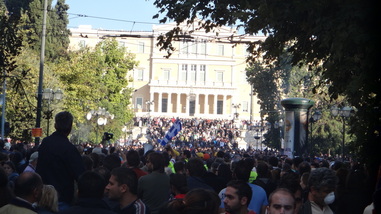 The next day, public transportation in Athens (bus, train, metro, taxis, etc) was still not running because of the riots. We mainly relaxed and walked around safe, open parts of the city. Footage on TV showed the riots based in Syntagma Square--outside Greece's Parliament building. Although initially peaceful, the riots had turned more violent with fire bombs, rocks thrown, and resulting tear gas. A few protesters died during the riots, along with several hundred wounded: http://www.usatoday.com/news/world/story/2011-10-20/greece-protest-death/50840588/1At this point, we also decided to stay in Athens all 6 days instead of going to Santorini. Ferry schedules were erratic, and we wanted to save money and just enjoy all the many things Athens offered. More yummy food ensued. On day 3, public transportation started running on a limited basis. We finally got to Monastiraki, where we enjoyed our first gyro of the trip. Greek restaurants in the US just can't compare to the quality of food in Greece. The ingredients are so fresh, and the herbs just jump out at you. Did I mention the food was fantastic? :) It was easy to forget, as we were enjoying our food with hundreds of other people around, that fire bombs were being thrown less than a mile away. You would never know it. People were laughing and relaxing, drinking wine and casually eating. Then, people started coming through the center with white tear gas marks on their faces, and some still wearing masks. It wasn't clear who had been protesting and who had just been observing. Everyone blended together, looking frustrated and sad. After getting up from the table, we noticed that a nearby ATM machine had been completely ripped out. Glass was fractured and money had clearly been stolen. There was also a garbage strike, too, so trash had been piling up in dumpsters. Some garbage cans had been kicked over and burned, which at least helped kill the pungent stink. Our curiosity to see the madness in action led us to Syntagma--riot central--just a short walk away. We had heard things were simmering, so we thought it would be a good time to check it out. We inched closer, and everyone around us looked normal. Aside from the police barricades and SWAT team, it appeared fairly safe. Then, a woman 6 feet away blew her whistle and the crowd started chanting. The cause became more urgent, and the tear gas started making my eyes water, so this was a good time to bolt. Ephi brought us to a restaurant on the way home with a 6 plate dinner spread. We tried many different foods and walked home with a food coma.
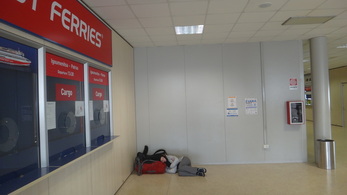 The trip to Greece was probably our biggest challenge during the entire trip. We faced delays, illness, and total uncertainty...but eventually we made it from Florence to Athens.
First of all, I continued to be sick. Leaving Florence, we normally would have just walked the 40 minutes with our backpacks to the train station. Instead we walked 10 minutes to the taxi station. A taxi finally arrived awhile later.
Every train we had taken thus far had been extremely punctual--within 90 seconds of the planned departure time. That was really good because sometimes our connections were only 6 minutes, and we never missed a connection. But, in Italy, we encountered our first delay. About half of the trains on the monitor were delayed, and we ended up leaving 20 minutes past the scheduled departure. Our connection happened to be 45 minutes in Bologna, so thankfully this wasn’t an issue at all.
Once in Ancona, we took a bus to the ferry ticket office near the port. A ferry from Ancona to Patras was free with our Eurail tickets, but you can only book at the port ticket office. You cannot book anything in advance (we tried travel agencies and contacting the ferry directly). The Superfast ferry was supposed to leave at 1:30pm, and we rushed to check in and buy tickets one hour in advance. That's when we found out that Superfast was not operating anymore that day (in direct contrast to the website and their ticket agent's previous email). The only other ferry departing Ancona for Greece was Minoan Lines. They were supposed to leave at 4:30pm but were delayed until 9pm. That meant we had about 9 hours to kill at the ferry ticket station.
I was physically exhausted from our travel that day, and I literally collapsed on the chairs in the ticket station...passed out for an hour while Chris bought the tickets. Afterwards, I moved to the floor in a corner and slept for another hour. I was the highlight of everyone walking by.
We left the Ancona port at about 10pm. My sinus infection migraine, flu hangover, and I enjoyed a 23 hour ferry ride to Greece.
We arrived in Patras, Greece at 8:40pm the next day, and rushed to find the bus headed to Athens. According to everything we had read (but, of course, couldn’t purchase in advance) the bus to Athens was just outside the port. Nope.
We thankfully ended up following 2 young Persian guys who were also headed to Athens. They had lived in Athens and knew Greek, so they asked people for directions to the bus station. After about a mile walk, we found the bus station. The 9pm bus to Athens was leaving, but sold out, and the next bus wasn't until 2:30am.
So, we spent over 5 hours hanging out at the bus station with Nemo and his friend. We talked about their time living in Greece and Nemo’s girlfriend in Athens that he was going to meet, and just enjoyed their company. We were so grateful to meet both of these guys along our journey. They were selfless and gracious, offering to help in any way—from snacks while waiting in the bus station to a ride once in Athens.
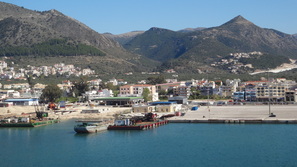 We made it to Athens at 4:58am, 2 minutes before the taxi drivers had their mandatory 5am strike. They hungrily asked everyone for business. But, because they couldn't work the whole day, they were inflating their prices significantly. Nemo and his girlfriend spoke to a taxi driver to confirm directions and a lower, negotiated price. They were amazing people. It would be so easy--and, well, American--to just say "good luck" and leave. They wanted to make sure we were in good hands and took their handoff seriously. We were very lucky to meet Nemo, his friend, and girlfriend, who all helped ensure we made it to our destination safely. It's nice to know there are good people in this world willing to help others out.
A family with a puking baby joined us along the taxi ride, but we finally arrived at the destination address with no problems.
We were staying with my family friend, Ephi, and 63-year old Athens native. Like most other Athenians, she lives in a condo building. I walked up to the front door where the last names of residents were listed. I didn't know Ephi's last name, and this was the final test to our Athens journey. I selected the one that I thought looked right, crossed my fingers, and hit the buzzer at 5:30am.
Holding my breath, when I heard the answer, I said "Ephi???" I received a "Katie, you're here?" in response. That was the most beautiful sound ever. Chris and I both let out a huge sigh of relief and climbed the 3 floors of stairs to Ephi's place.
She kindly received us and had our bed ready. I can't even begin to explain how we felt, after 48 hours of traveling, when we finally arrived at Ephi's house in Athens. We had a bed, a bathroom, and a very hospitable host who wanted to cook for us. It was AWESOME.
That experience was stressful and really tested our sanity a little bit. We laugh about it now. But, there were times—usually when we were just waiting for hours without a feasible end—we questioned if we were ever going to make it to Athens. I’m pretty lucky, though, to have a supportive man friend, the blessing of goodhearted people, and the fortune of an incredible journey.
 Our Airbnb contact in Florence had a wedding the afternoon we arrived. To "check in" before she left, we took a taxi from the train station. I realized that was actually the very first taxi we had taken the entire trip. It was a quick 10 minute drive over to Olivia's house, and then we climbed the winding walkway up to meet her. It was around 1pm, so we dropped our bags and set out to explore Florence. We stopped at a little place for a takeaway slice of pizza and sandwich and walked around. First, we encountered a small, quaint little square near a university. There were a few outdoor cafes, and a loud group of young people were chatting on a bench. Then, we continued along the main road and across a large bridge into the city center. Next to our bridge lay Ponte Vecchio. Built in 1218 and rebuilt in 1345, it was the only bring to survive World War II bombings and even still remained after the 1966 flood. The bridge was very charming and clustered with little shops along the corridor, which has been its tradition for over 700 years. http://www.visitflorence.com/florence-monuments/ponte-vecchio.html We walked past the Iffiza , a very famous art museum, which had statues of famous Italians (Da Vinci, Donatello, etc). This fed into a large square—Palazzo Vecchio--with the old royal palace, another museum, and statues galore. We were impressed by this showcase, especially since I love a good statue. Turning onto a side street, we found the magnificent Duomo. It's an enormous gothic cathedral with accompanying baptistry, and in the traditional cathedral layout (in the shape of a cross). But, what makes this cathedral so unique is the exterior design. Colorful tiles in pinks and greens (very rare colors for a church) adorn the entire outside of the building. Built in the 1200s, the baptistry was the first structure erected. Then came the the rest of the Duomo, including the dome in the 15th century, which was an enormous feat. It has no internal braces or scaffolding to support the dome. Using Rome as an example, the architect drew inspiration and concocted plans for the dome to support itself. It worked, and it's still standing today. The beautiful tiles were added in the 1800s to match the baptistry. By this point in our journey, we were physically tired (plus Chris still had his cold) and our senses a little overwhelmed from everything along the way. We had seen unthinkably beautiful places every day and truly felt the experience and life of each place. Seeing the Duomo was incredible, but it was almost like we weren't capable of fully absorbing it just yet. It's a luxury to have this "problem," we knew that we were spoiled. But, we also felt inclined to take a little break and just relax for a bit, so we could better appreciate the tremendous city before us. So, we stopped at a cafe and enjoyed a glass of red wine (me) and coffee (Chris) outside, even though it was freezing. It was nice to chat together and watch everyone bustle about. Shortly thereafter, we went looking for a place to have dinner. We finally decided on a restaurant and each indulged in pasta. The waiter asked us what we wanted for a second course (we kept on hearing this throughout Italy), and we said that we were full. Nothing more please. We looked around to the other few tables and noticed that they had several plates on the table. They had ordered appetizers, wine, pasta, meat, and maybe dessert. They were the more ideal patrons, I suppose. Then, the waiter left for 30 minutes before depositing the bill on our table--it is is very common for this process to take forever. In American restaurants, they like to turn tables over quickly, and Americans typically don't spend more than 90 minutes dining anyway. But in Europe, dining is much more of an event. They can spend 3 hours eating course after course, ending with coffee. The waitstaff typically won't bring your check unless you purposefully catch their eye and ask for it. That can easily take 30 minutes to an hour sometimes. After dinner, we stopped for our obligatory gelato at a wonderful place along the way. The people were nice, the prices reasonable, and thankfully the gelato excellent. Once home, I took a shower and read the information Olivia had left us about Florence. The plan was to more fully discover the city the next day and go inside the Duomo. The next day, I awoke feeling really congested, feverish, and overall pretty bad. Chris saw my condition and set out to find medicine at a nearby pharmacy. Unfortunately, it was Sunday, so almost everything was closed. He determinedly found an open pharmacy near the train station and, after walking over 3 miles, returned back with medical goods. After resting all morning, I decided to try and venture out. So we, along with another Airbnb traveler who arrived that morning, walked to the city center for a few hours. Unfortunately, I just couldn’t stay out very long, and we picked up dinner to go. The next day, we had to wake up early and catch our train to Ancona. From there, we would ferry over to Patras, Greece, and then take a bus to Athens. That was the plan. More to come in the next section. Although our time was really limited in Florence, we were thankful to have seen the city. In the end, Florence was a place we would definitely return. It is a busy city with a metropolitan vibe, but it's also very cultural, historical, and beautiful. We’ll just have to learn more and see Florence more fully later during one of our inevitable future trips.
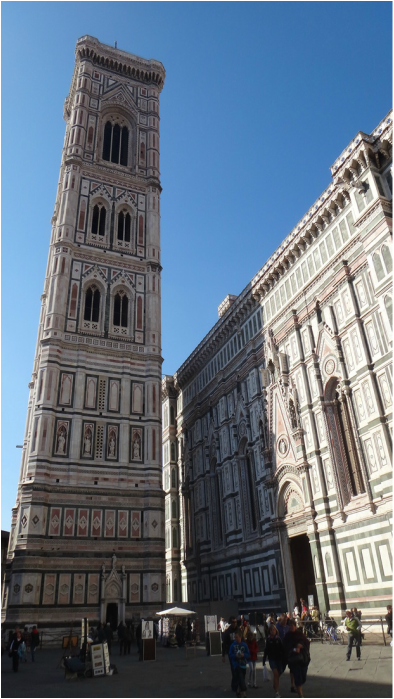
Left side of the Duomo
This blog is about 2 weeks behind, and we're about to head to the airport now. I'll update the rest of Italy, Greece, and Spain over the next 10 days. There's great stuff ahead...illness, riots, tapas, and more! :) So, please check back. And maybe even give us a call soon.
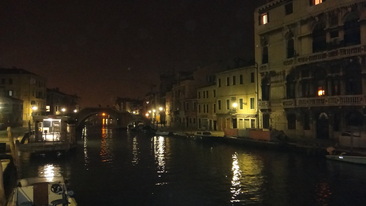 We were both jazzed about our journey to Venice. It was one of the places we were most excited about visiting on our trip. We couldn't wait for the gorgeous scenery, authentic food and gelato, and Italian hospitality.
Our introduction to Venice began with our Italian bus driver. An Australian family with 3 boys sat near us on the bus. The kids had been very well behaved during the entire 4 hour bus ride, but the 8 year old boy stretched his leg on a nearby seat during a stop. The driver spotted that behavior, rushed over and yelled at him to take his foot off the seat (complete with hand motions)--"this is not your house!!!" The poor kid was just embarrassed, and his parents didn't quite know what to do but awkardly look away.
Then, although our bus ticket listed the end point as Venice train station, the driver dropped the bus full of tourists onto a cruise port with no instructions. Of course, everyone eventually figured it out. We had to pay a euro each for a nearby train to take us 10 minutes to the actual Venice train station. It was now about 4pm when we arrived in Venice.
Sometimes on this trip we learn something that we feel like we should've already known. For example, did you know that Venice is actually an island? We didn't. You either spend a fortune to stay on the island of Venice or less of a fortune to stay on the mainland and just take the train over to Venice. As you probably guessed, we stayed on the mainland--Mogliano Veneto to be exact--about a 20 minute train ride away.
We took the train to our hotel to drop off our backpacks (thankfully it was basically adjacent to the station) and then returned to Venice. We walked around the city for a couple of hours, soaking it all in. Walking over the main bridge from the train station was a magical moment for us,, and we got our first glimpse of Venice's legendary beauty. We were actually in Venice!!! The Grand Canal splits Venice in two and then there are a plentitude of little canals everywhere. The sight of the weathered buildings lined against the canals was just breathtaking. We thought it was so gorgeous and loved seeing the boats and gondolas making their way across the canals.
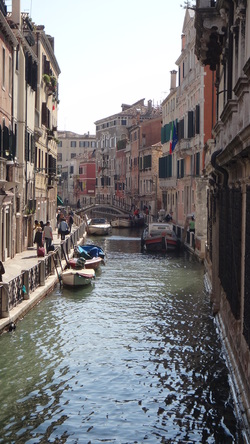 For dinner, we ate at an outdoor cafe. We'd learned already that you essentially just sit at a table and catch the waiter's eye while doing it. We were absolutely pumped to have our first Italian meal--pasta! I ordered a glass of wine and noticed the $2.50 euro service charge for the pleasure of simply eating at this restaurant. The waiter marched up to our table and delivered our first stone-faced "prego" ("please"), meaning "please don't ask me any questions or expect me to greet you, and just order now."
Two older ladies sat down at the table next to us, and we quickly learned that they were from northern California. They were very friendly and we chatted with them for awhile. Fifteen minutes after they sat down, the waiter "prego"-ed them, too, and one lady ordered a bowl of soup. The other lady wasn't feeling well and didn't want anything. Our waiter wanted none of that and demanded "Then, you must drink something. You can't sit here with just soup." Keep in mind this was about 9pm on a Tuesday night with his restaurant half full. And the soup was 8 euros with a 2.50 service charge. The lady ordered bottled water because, of course, they don't serve you any free tap water.
After dinner, we stopped at one of the many gelato stands and tried our first Italian gelato. It was pretty good and actually reasonably priced. Exhausted, we headed back to the hotel.
The next day, we spent about 6 hours walking around Venice. We started out the day sharing a pizza at a place next to the Grand Canal. Then, we started wandering. We weren't headed anywhere in particular...just wanted to discover the different parts of the city. Crossing over little bridges and narrow canals, we explored the more hidden, local section. There were kids walking around on break, and art students sketching landscapes on the grass or canal.
It seemed like around every corner, there was a new, uncovered part of the city. It was all so gorgeous. The buildings were between 2-5 stories and rustic, seemingly abandoned. For some reason, it didn't feel lived in. The whole thing felt like a big movie set. It was so beautiful, but cold somehow, and didn't feel real.
Sauntering alongside the edge of the island, we watched the boats cruise on the sea. This area had some lovely little cafes and people outside chatting. Edging further, we came upon the main square in Venice--Piazza San Marco. Lined with a church (St Mark's Basilica) and staggering museums and, of course, crammed with tourists, this square was overwhelming. We sat down for a minute and studied the astronomical clock on top of one of the museums. For all of you non-pagans out there, you'll be happy to know neither of us could remember that elusive 12th Zodiac sign. (It was Capricorn...figures.)
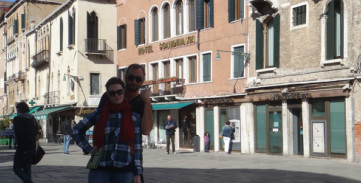 Really?! Hotel Scandinavia again???? One thing we really enjoyed about the whole experience is there isn't a whole lot to do in Venice. You simply walk around, eat, shop, and maybe visit a museum. After so much on our itineraries in other locations, this was a welcome break. There's plenty of ways to spend your money--the Venetians guarantee that--but we weren't in a hurry to do too much but just enjoy the scenery and food. Other tourists definitely let the money flow--a 40 minute gondola ride along a canal cost 80 euros--and the gondolas always were running! The people on them never looked too happy, though. They were pretty bored and probably pissed about spending so much for a rude guy in a striped shirt.
Then, we made a big mistake. We tried to go towards a specific destination. The sun was heading down, and we wanted to eat dinner somewhat near the train station, so we wouldn't have to navigate in the dark. We would soon find out that Venice is essentially a labyrinth. Dozens of narrow alleys curve and twist, so streets seem to change every 20 feet. And keeping with the greedy spirit of Venice, free maps are simply not available anywhere. Tourists must pay for a map and it didn't even really help them--everybody looked puzzled walking down the streets and we heard many a "are we going the right way" or "did we take a wrong turn again?"
For us, we soon discovered an indisputable fact that all roads lead to Hotel Scandinavia. We had been in a square near Piazza San Marco, trying to find our way near the train station. I told Chris that I was pretty sure we had been on this road before. By this point, all roads look really similar (shops, cafes, gelato places, etc) but I had remembered a few key landmarks, including Hotel Scandinavia, because I thought the name was strange in Venice. Sure enough, we passed those landmarks which led us back to Hotel Scandinavia. We went a different way (for a fourth time), and ended up at...Hotel Scandinavia! This has a rather maddening formula, but thankfully we were just able to laugh hysterically at the ridiculousness of it along the way.
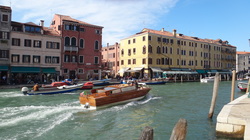 Finally, we made it through the maze and near the train station. We had given up on finding a lovely spot for dinner at this point, and just chose a place in the center. Gelato had already been consumed during our time earlier walking in circles, so we decided to skip it post-dinner. :)
We had one more day in Venice, and for lunch, we dined at an over-priced, touristy spot by the Grand Canal. This was my idea because I thought it would be nice and romantic to eat by the water. I was mistaken. It was crowded and the waitstaff just wanted you to buy an expensive meal and leave quickly. After the stiff "prego" introduction, which we were just accustomed to by this point, we again got a dissapointed "is that all?" face after we ordered our meal. You begin to feel like a faceless big bag of money just waiting to be shuffled about. As the waiter cleared our meal, a gust of wind blew (like it had been all morning) and knocked the bread into my forehead. The waiter snickered and said "it was the wind, not me." Nice. Then, another waiter brought the final bill out and actually asked about a tip. Please note that most Venice restaurants, including this one, have a service charge already included. Plus, in most of Europe you don't really tip--it's included in the price of your meal. When the waiter asked if he should put the tip on the credit card or if we would leave cash, we mentioned the service charge. He said that was just a tax. We signed the credit card slip for only our bill amount (no tip) and left.
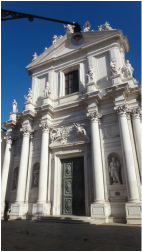 Our picnic stop The whole experience left us jaded. We didn't want to interact with anyone because we were so tired of unfriendly, greedy attitudes. Leaving the crowds, we walked around the perimeter of the island again and grabbed fresh bread, cheese, and water for a picnic on some church steps. It was quiet and picturesque, which is what we needed.
We decided to leave Venice shortly thereafter and head back to Mogliano Veneto for dinner. Since it's a small suburb, we thought we could find a quaint restaurant with warm people and good Italian food. The front desk man recommended a place nearby the hotel and instructed us to tell them "Walter sent us." Hopeful, we entered the restaurant and were promptly taken into a separate room by ourselves. Other tourists slowly trickled in afterwards, and we realized that all the foreigners were being herded together yet again. Walter is a busy man. And some things just never change, I guess.
No, we never found great Italian food. And yes, we were disappointed with our experience in Venice. It was very beautiful, but the impersonal behavior of everyone there left us feeling jaded. We've learned that everyone's opinions of a place are always skewed by their personal experiences. So, maybe other people found an "in" somehow and like Venice. Or maybe they were willing to spend $100 on a meal and $80 on a gondola ride, and that simply met their expectations. Regardless, Venice is not a place in which we are eager to return. If circumstances change, like we find a great contact there, then maybe we'd consider it. But otherwise, as several other tourists later shared with us, it feels shallow and empty... a "city with no pulse."
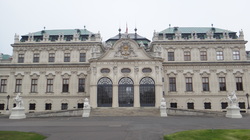 After a 4 hour bus ride, we arrived in Vienna at around 7pm. Our Airbnb host, Ingela, had given me directions on the metro, and she would meet us at the final stop. We found our way around with no problems, and we started feeling pretty good about our public transportation navigational skills.
Ingela met us outside the metro stop (which was still freezing and raining outside!), and walked us 3 minutes to our little short term rental apartment. It was compact but incredibly adorable! Ingela had a hobby of buying these apartments, decorating them, and renting them out. She had a little fruit basket for us with champagne, a mobile phone, and a charming place to make us feel at home. Ingela had made a list of her favorite things to do, and she told us that Vienna has the best ice cream, which got me very excited. She was lovely and it was a perfect introduction to classy Vienna.
We ended up walking around the city center trying to find dinner, and stumbled upon a Chinese restaurant. We'd both been craving Chinese food, so that was an easy choice.
The next day, we walked around the city center and discovered Belvedere Upper and Lower--2 palaces that were built for Austrain royalty over a hundred years ago--and separated by a sprawling, decadent garden. Today, both Belvederes are museums, which seems to be the trend everywhere. I thought it must be an interesting thing when you have all these lavish buildings intedended for or used by royalty. Without a monarchy, they have to find some use, so art or historical museums usually fit the bill for occupancy.
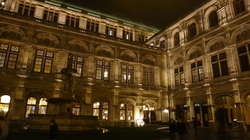 After strolling by embassy row, we ate lunch in a touristy area and ordered a pizza for us to share. Imagine our surprise when the waiter brought out 2 pizzas 5 minutes later. We said we only ordered one pizza, but the waiter insisted we had ordered two and were "paying for it anyway, so are you eating it or not?" We declined eating the 2nd pizza, and the waiter stormed off in fury to vent to everyone else nearby that would listen. That was pretty awkward. But, he later calmed down and brought us our check at the end of the meal with only pizza on it. Mad props to Mr Duzan for keeping his cool with the waiter! :) I wanted to take a tour of the infamous Vienna state opera house, while Chris walked around a little more: The opera house is magnificent! It opened in 1969 (with Mozart's Don Giovanni) but was damaged in WW2 and re-opened in 1955 (with Beethoven's only opera, Fidelio). They mount over 60 operas a season, around 200 productions, which is the largest number in the world. They perform in rep--rarely do the same performance 2 nights in a row--which means they have to tear down the set every night and set up a different one the next day. At 4:30pm during my tour, they still hadn't finished the Madame Butterfly set for 7pm! And that's just the set, a large feat on its own. Imagine costumes, lighting, and other technical elements that would have to change so quickly and regularly. http://en.wikipedia.org/wiki/Vienna_State_OperaThe opera employs over 1,000 people each year--musicians, singers, costumers, technicians, etc. It's a big operation! The tour also brought us by the Emperor's Room--built for Emperor Franz Josef, the last monarch of Austria, and his wife, Empress Elisabeth--who were present at the opening. The room, as you can imagine, was very grand with red velvet doors (finer than the box seats), silk/gold walls with the Austrian royal coat of arms detail, gold emblems, etc. It can be rented for 20 minutes at intermission for a meager 500 euros.
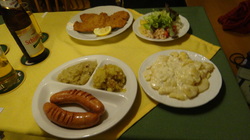 For dinner, we ate at a traditional Viennese gaushaus and feasted on sausage, schnitzel, roasted potatoes, and non-alcoholic beer (for Chris). It was truly delectable, and also we had amazing service, which is rare in Europe (and well-deserved after our lunch!) The next day, the weather had thankfully much improved. It was no longer rainy and the cold temperatures were finally tolerable. We first stopped by the Schonbrunn Palace--just one metro stop away from where we were staying. This palace was built in the 1600s by Maria Theresa (mother of Marie Antoinette), a famous monarch in Austria's history. The Austrian royalty lived in Schonbrunn for 3 centuries until the end of the monarchy in 1918. In fact, the last Emperor--Franz Josef--died from old age in the palace. Josef's wife, Empress Elisabeth (Sissi), also his cousin, was not too thrilled with this marital arrangement. She wrote many letters directly stating the fact that marriage wasn't for her. Sissi spent most of her time traveling and was hardly present in Vienna. She was later killed in Italy by an Italian rebel group. The palace grounds were very spacious and lush. Inside the palace was plush and beautiful, but not overly decadent (like France). For example, there were rich walls made of walnut and elaborate paintings, but it seemed more tasteful and gracefully elegant. There's a virtual tour on their website if you wanted to check it out: http://www.schoenbrunn.at/en/wissenswertes/palace.html
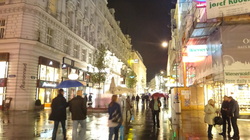 Next, we hunted down a coffee shop that Chris had found online. It was built in the early 1900's and used earthy tones with an "old world" charm. The booths were large, the coffee selection was vast, and the prices were actually reasonable. We finished off breakfast with our first taste of Viennese ice cream. It was...absolutely incredible: creamy, flavorful, and fresh. I instantly fell in love.
Our camera died at this point, so unfortunately we weren't able to take any pictures the rest of the day. Everything in Vienna is pretty close together, so moving around feels fast and easy. Shortly after breakfast, we arrived at St Stephen's Cathedral. By this point, we had seen many a cathedral, so it was a bit hard to impress us. St Stephen's was the most ornate, though, and did manage to offer something unique. The statues were actually in color (unlike gold or stone that we had previously seen) and appeared lifelike. Every square inch seemed to be adorned with a statue or some decoration.
On either side of the cathedral's entrance, there were shrines to Joseph and Mary. People solemnly sat and prayed. To light a prayer candle, it costed only $0.70 euro (as opposed to 1-2 euro in Notre Dame). All in all, this was a very captivating cathedral and we enjoyed the brief visit.
Nearby lies Hofsburg, the heart of the city, including the monarchy's "city" abode with imperial apartments. Hofsburg contains several buildings, such as the National Library, around a central garden. There is also a monument to Mozart. Our camera died at this point, so unfortunately we weren't able to take any pictures the rest of the evening.
We dined just outside of Hofsburg at a cafe that came recommended by our host, Ingela. After eating so much meat throughout the trip, we enjoyed a vegetarian dinner and indulged in ice cream again for dessert. It needed to happen.
Vienna is a city that not only boasts, but is also founded in, the arts culture. From opera, ballet, theatre, symphonies, and art, to museums and history, Vienna claims worldwide fame. This love of the arts is embedded in Vienna's culture. If you visit Vienna, most "things to do" revolve around the arts or royal palaces. Thankfully, this suited our tastes, so we greatly enjoyed Vienna.
To properly cap our time in Vienna, we saw Mozart's Opera "Magic Flute" at the Vienna State Opera House (Wiener Staatsoper) that I had toured. Seats usually run from 40-200 euro, but they were sold out. From the tour, I knew that the opera house offers standing room only "seats" for 3-4 euros. This was perfect for us and our budget, so we elected to stand through the 3 hour opera.
It was magical to watch this opera in such a renowned opera house with off the charts singers and musicians. Magic Flute actually premiered in Vienna in 1791, about 2 months before Mozart's death. I had chills listening to the arias and hearing the symphony play. The melancholy solo that the character Pamina sings of her love's rejection (and planned suicide) was absolutely phenomenal. I was in complete awe at the depth and passion of her voice, and the pain she conveyed (even to the nose bleed seats). Completely entranced, I applauded at the end, and was definitely not alone. She received an overwhelming response with loud, enthusiastic cheers.
Chris was not feeling well all day. With the entire world coughing and sneezing around us, it had felt like everyone was sick, and we knew it was just a matter of time. But, Chris stuck it out for the entire 3 hour opera. It was certainly crowded and hot up in our seats, and I was grateful that Chris was such a trooper. My manfriend is a badass.
We enjoyed Vienna and felt like our 2 days wasn't really enough. For the first time on our trip, leaving was rushed. We had underestimated the time travel soaks up. The 4 hour bus ride from Prague, for example, took about 8 total travel hours of our first day allocated to Vienna. So, 3 days we planned turned into 2 full days and 3 nights. Another one for our "next time" bucket. Off to Venice!
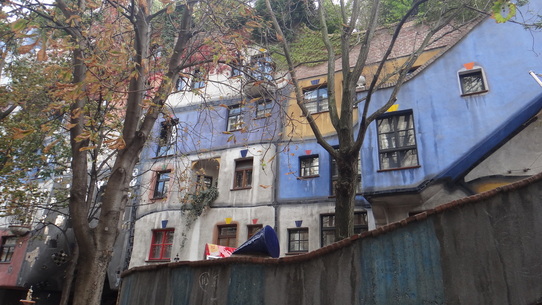
A pretty rad little joint showcasing modern design
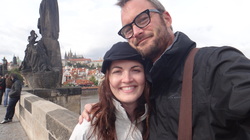 After a 4 hour fairly painless bus ride from Nurnberg, we arrived in Prague at 10pm. My old friend, Chris Moore, lives in Prague and we were staying with him there. He’s such a champ. He met us at the bus station even after being totally jet lagged from his trip back from the US earlier that day.
He encouraged us to soak in the Prague culture right away and start drinking. So, we did. We all went to 2 bars—one a converted restroom (the rooftop was pretty fun, but shortlived) and the other was dubbed the “Red Room,” which had live music and was…well, red.
A couple of hours later, we came to his home and met his beautiful, sweet girlfriend Julie who had kindly made up a deli plate for us to snack on when we got there. After noshing on some delicious sausage and cheeses, we crashed on their couch and would explore Prague the next day.
First stop: St Charles Bridge. The bridge is beautiful and incredibly historic, having weathered both war and…weather. This combo makes it a popular destination. There are old, religious statues adorning it on the sides, and the ends of the bridge are each decorated with towers and Czech royal coats of arms. But, the view of Prague from there is spectacular. You have a view of old and new Prague (which the bridge connects) over the river. Various historical buildings presenting differing types of architectural styles line the river, and the result is stunning.
Of course, where there are tourists, there are things to buy and people to steal your money. Merchants offer “hand made” jewelry and caricature artists sell their drawings, and some suspicious looking people seem to have eyes roaming at peoples’ purses. Chris and I saw this action throughout the trip several times. Pick pocketing is certainly not a rarity; you’ll find it everywhere, and more in some places. In Prague, I clutched my bag tighter than I did in, say, Switzerland. Chris and I would point out to the other “hey, watch out for that guy” as we saw their eyes scanning. Nothing ever became an issue for us, but we were smart about not becoming targets.
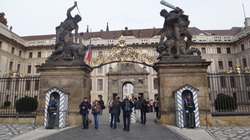 After the bridge, we crossed over into a coffee shop and grabbed some coffee and muffins. Well, I thought I got a cherry muffin (because that’s what the salesperson said), but it turned out to be more like cake, which would be fantastic at any time of the day besides breakfast! We accidentally ended up in the smoking section at first, which is adjacent to the non-smoking section. So, you get the enchanting smell either way. There are quite a few smokers in all of Europe, as you can imagine, and the culture is much more tolerant of it than the US. Even in Paris, where you can’t smoke inside buildings or restaurants anymore, you can smoke just outside of it or even a foot outside the train. Unfortunately, it does make it a little harder for the non-smoker to avoid being surrounded by it. After our breakfast cakes, we walked up the hill to the Prague castle. It’s accompanied by the St Vitrus Cathedral, where various royal weddings and funerals took place. Both are magnificent. The St Vitrus Cathedral is built in the Gothic style (the style of every other major cathedral we’d seen). The stained glass is very meticulous and separated by iron, as opposed to free-standing. The result is beautiful. Statues lining the congregation, instead of stone, appear bronze and lifelike. The interior and exterior are quite ornate with gold and intricate detail. Other new items we saw in this cathedral were gold stars at the peaks, and an astronomical clock. I toured the palace next door. Because of 2 large fires in the 12thand 16th centuries, not much was restored. The fires caused much of the structural devastation before the 17th century; afterwards it appears that wars took care of the rest. The Czech monarchy (Habsburgs) ended its reign in 1918 after over 7 centuries, so the palace hasn’t been inhabited in nearly 100 years. http://en.wikipedia.org/wiki/Habsburg_Monarchy The décor was surprisingly simple, but that’s probably just because a lot of the furnishings were not present anymore. I stood in the room where a couple of rebels threw 2 noblemen out of the window, starting the 30 Years War. This is an amazing thing about Europe. With centuries upon centuries of history, often times you’ll just find yourself standing or looking at some incredibly significant piece of local or world history. Remarkably, both men survived (it’s on the 2nd floor but probably 30 feet up) without any major injuries. The men allegedly landed in a dung heap that cushioned their fall and likely freshened them up.
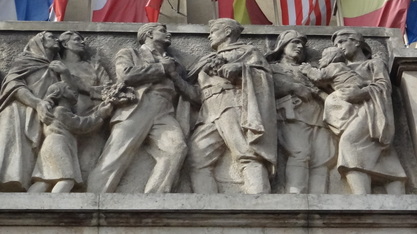 That evening we indulged in our first “night out” during the trip. We joined Chris and Julie with a couple of their friends to a few bars. It was fun to meet their friends, who were also American expats and primarily teaching English to Czech natives.
We walked around Prague more the next day. Before we arrived in Prague, the weather had been beautiful and the temperature comfortable. Our first morning, it turned rainy and cold. So our walks about the city were slightly dampened, but seeing the unique architecture made it totally worthwhile. You see very different buildings and variety of styles than we found anywhere else— gold stars and halos surrounded the heads of religious statues (just like you see in their paintings) and the peaks were pointed, rounded, and some pear-shaped. Remnants of Stalin’s influence throughout the “Iron Curtain” are visible through architecture.
The recent history of Prague is also fascinating. It was occupied by the Nazis during WW2, and with Allied forces on one side of the city and Russian soldiers on the other, the Czechs were actually able to push out the Nazis by themselves on May 8, 1945. The Nazis retreated but the Russians deftly negotiated an agreement with the US to win the land post-war. Occupying Czech the very next day, the Russians even positioned themselves as the heroes in the country’s liberation and cleverly used it to win political leadership in the next election, 1948. This is when Prague became ruled by Communism. The Soviets also changed “Independence day” from May 8 to May 9 (when the Soviets arrived to “free” the Czechs from the retreating Nazis). This new “independence” would stay intact for over the next 3 decades.
There are still Communist-era buildings (although most have been torn down), like the Crowne Plaza we visited, that depict the friendly Russians kissing the Czech peasants with brotherly love as they rescued them. Chris and Julie’s apartment complex was even built to house single families that applied to the Communist government for it. The complex is huge and intentionally simple. The area contains rows of these buildings, almost all of equal style and size. Purposefully, these buildings were designed to emphasize equality amongst the people. No individual was to be bigger than the whole. In contrast, while these buildings still stand (and still house Soviet made elevators! Awesome!), they are now privatized and decorated. It is a beautiful irony, really, that these buildings that once symbolized equality through oppression, now symbolize equality through expression. On our later train ride leaving Prague, we saw many of these gigantic rows of block buildings in each town we passed through the Czech countryside, which probably still house thousands of small families.
In America, we are so far away from Communism, that we both found this tangibility to it rather fascinating. Perhaps it is this history, or the Czech culture in general, but we also found the vibe of Prague different than any other place. It feels a little more ingrained in its roots, a little dark, and also a bit unpredictable. Being accustomed to and trained in a society where drugs and sex are bad, and true chaos rarely breaks out, it’s a stark contrast (and quite eye-opening) to watch things that are considered “taboo” to be easily accepted. Drinking is embraced in the Czeck culture by all ages (not just teenagers and young adults). Pilsner beer was created just west of Prague in a town called Pilzn (Pilsen).
 Drug use feels more rampant, as well. It certainly occurs everywhere, including the US, but because in our culture it is both illegal and deemed immoral, that activity is more underground. In Czech, people walk around with open containers, can be seen obviously impaired, and brothels can be found in regular neighborhoods.
We were in Wenceslas square and witnessed a demonstration (or was it a parade? Or a party?) with about 12 bus-type vehicles driving around. Each vehicle had a DJ blaring some different type of music than the other (Rap, Reggae, Industrial, etc). A younger crowd, costumed and impaired, followed behind whichever bus played their music of choice, seemingly entranced. Firecrackers popped near our feet. It was like a walking Rave! The whole thing just happened to start right in front of us. And although police were everywhere, something about the whole scene just seemed rather “anything goes.” We didn’t really know the culture, what this was about, and what could happen. While it didn’t necessarily feel dangerous and we left shortly afterwards, it was an impactful experience.
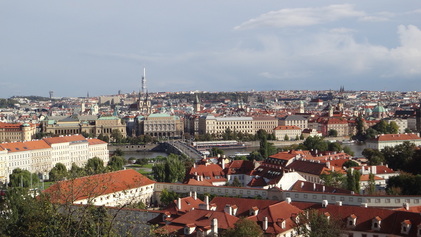 The Czech currency (Czech Koruna [crown]) was strong and pretty reasonable. Although the numbers sure looked high (40 crowns for a coffee?!), the exchange rate was about (17.5:1), so you just divide everything by about 17.5 to get a more calming number. We were over our total trip budget by this point (thanks to Switzerland and Paris), so this little monetary reprieve was helpful for us.
We really enjoyed Prague. The culture was interesting and the environment beautiful. The buildings seemed more authentic—less restored and just in their natural state—so it was nice to just walk around the city. We could’ve stayed another few days because there was so much more to see. But even though we had to head to Vienna, we felt grateful to have experienced this unique, funky, and gorgeous city.
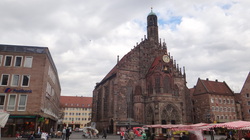 After roughly 6 hours on the train from Zurich, we arrived at our pit stop in Nurmberg. I had never been, but Chris had been for one day many years ago. We walked along the Old Town wall to our hotel Ibis. During this short 10 minute walk with our backpacks, we realized that we were really happy to have this brief time in Nuremberg. Checking in at Hotel Ibis was much friendlier once the front desk guy realized that I was a fellow Greek. He shook our hands and bestowed free drink coupons upon us. Dropping our backpacks off in the room, we quickly headed out to start soaking in the city. Past the stone wall lay the Old City, which consists of several alleyways containing shops and restaurants (for the obligatory consumerism), but also pieces of history. We walked past a square with a cathedral on one side and a bell tower on the other, followed by a very elaborate fountain. The whole area was so different than anything we'd seen yet. It was visually different with a beautiful use of stone, wood, and gold; it felt jovial and warm, but yet also a bit dark. Of course, we knew that 65 years ago, Nurmberg was a Nazi stronghold city and the epicenter of Nazi propganda, so it contained some sinister events: http://en.wikipedia.org/wiki/NurembergWe crossed a lovely old, wooden bridge and ate sausages and pork shoulder at a gaushaus. Chris found a really good, authentic tasting non-alcoholic beer, and I even decided to partake in a beer with dinner. In the morning, we went to the Nazi Party Rally Grounds (Documentation Center). A horse-shoe shaped building was built for Hitler but was never finished or used. It now contains a WW2 museum, which we visited. Right next to the museum is Zeppelin Field, which was used for Nazi rallies, and Hitler spoke from the podium. If you have seen video of Hitler speaking to masses of Nazi soldiers, it was from this podium. Unfortunately, we only had a few hours that morning in Nurmberg, so we didn't have a chance to visit Zeppelin Field. Next time. The musem gave a detailed timeline of the events in Germany leading up to WW2 and sought to explain the Hitler "myth" that he created. It was informative, tragic, and left us wanting to know more (both pre and post events of the war). We've all learned about the basics of WW2, of course, but there are so many background events, implications, and motivations of all involved that are really fascinating. For example, I didn't realize that many people in Germany opposed Hitler. From the Communists to the Democrats, there were several opposing parties. Hitler and his Nazis had them disbanded, killed, and/or sent them to the first concentration camps (used for Germans, not Jews at the beginning). The details of the Nurmberg trial were also fascinating, and they had video clips of the top ranking Nazi officials who were interrogated. Many of them were executed, and they even had the pictures of them post-execution--some still with nooses around their necks. Of course, each country in the Allied forces quickly positioned themselves to take the most advantage of the German spoils. But the overall devastation to humanity was really sad to witness. After the museum, we took a short walk around the the Old City again. There were many buildings that were also affected by the war, and they had to rebuild. Nurmberg Castle and the Cathedral were standouts for me there. At 2pm, less than 24 hours after we'd arrived in Nurmberg, we headed out for Prague!
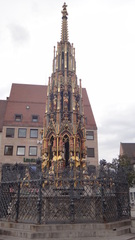
the fountain
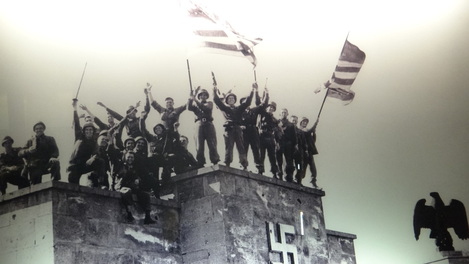
Zeppelin Field at the end of the war. 'Merica! F-Yeah!
|








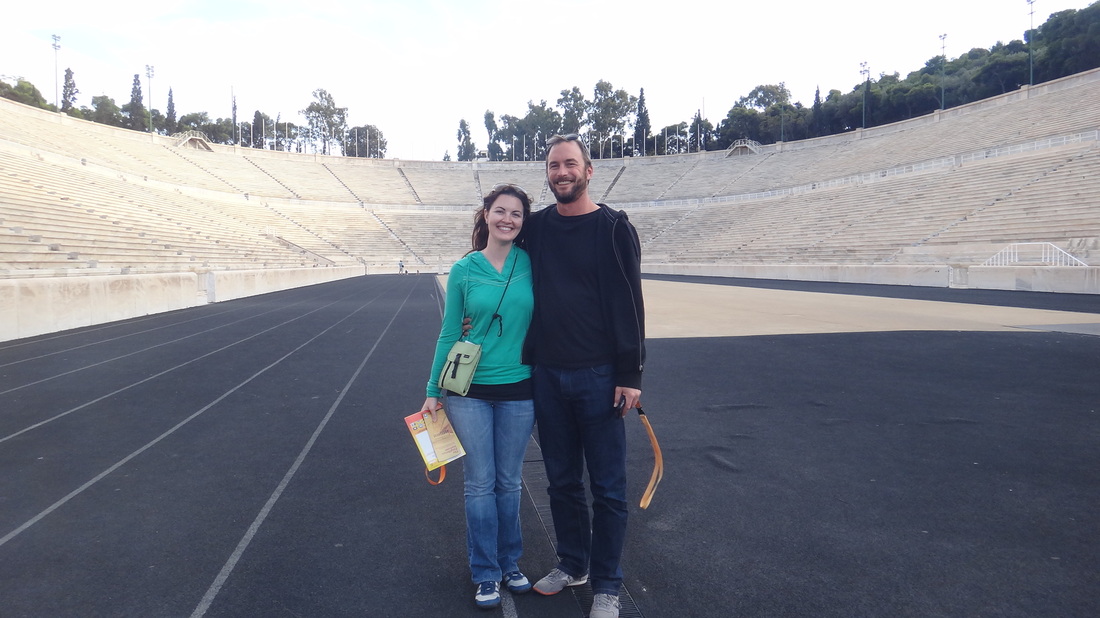





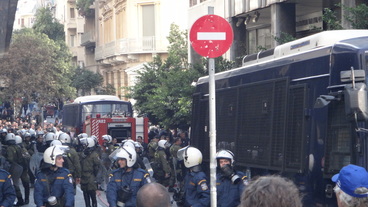
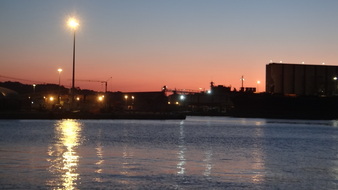


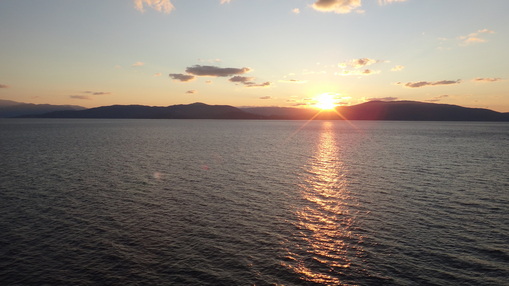


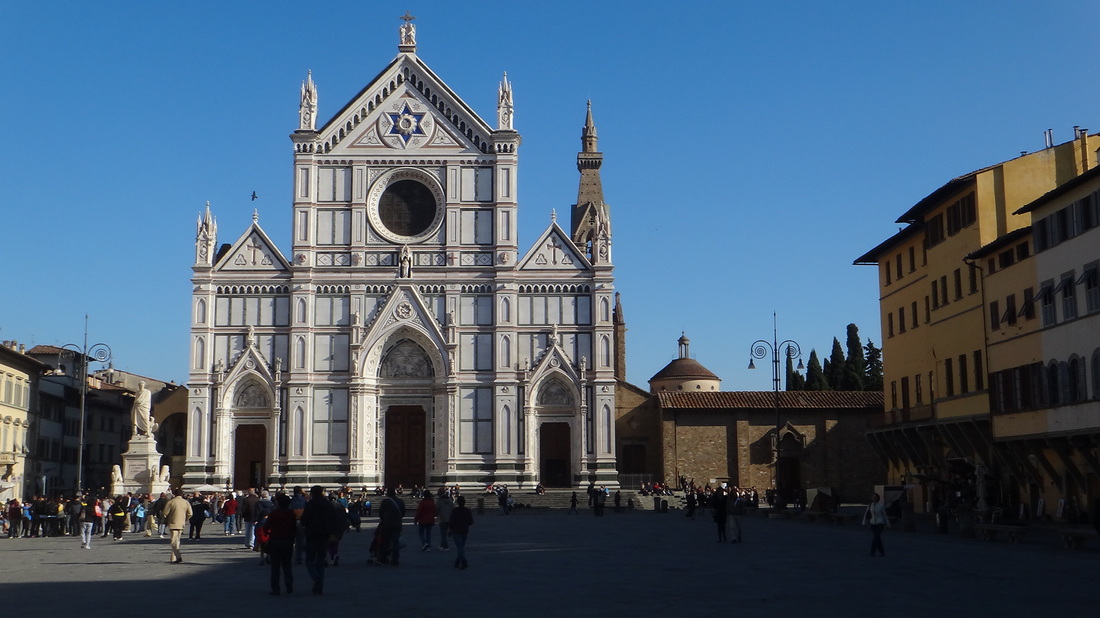





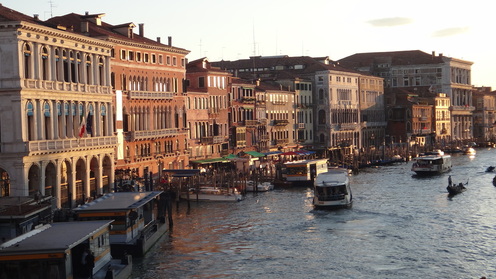
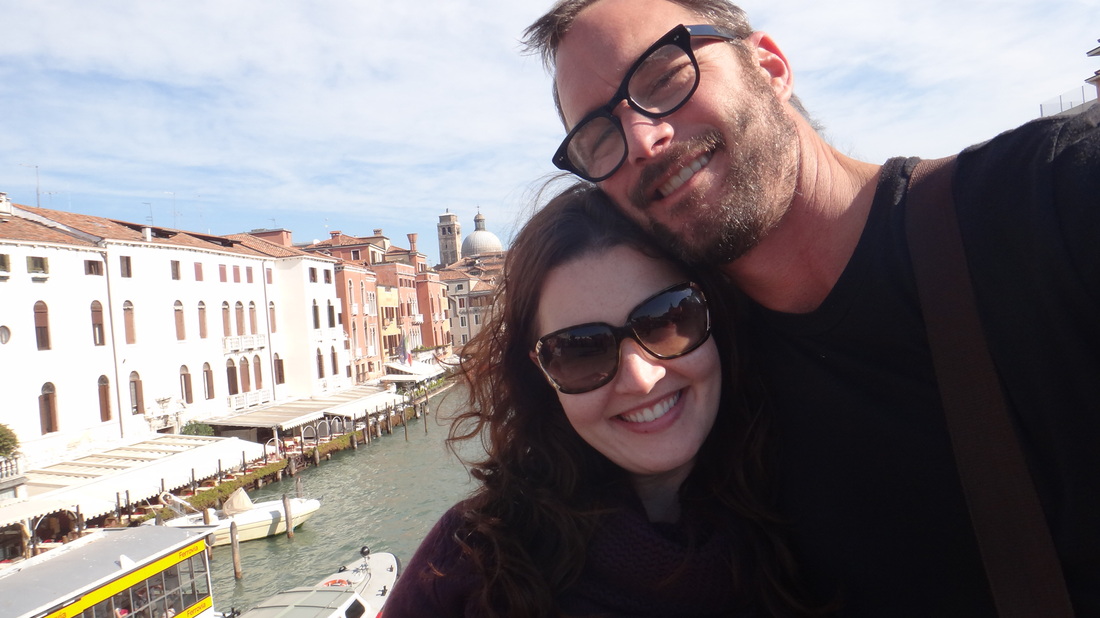

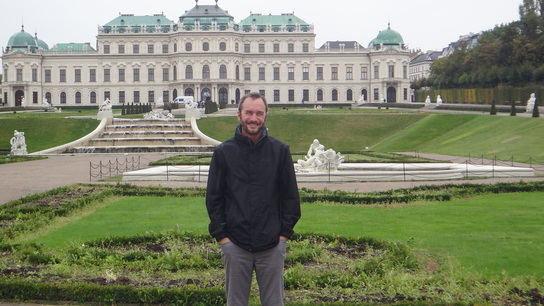


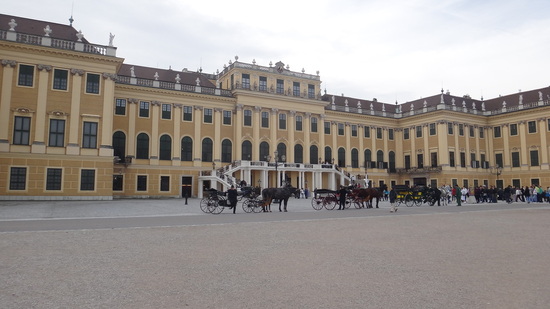



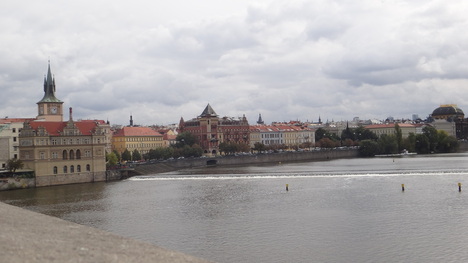

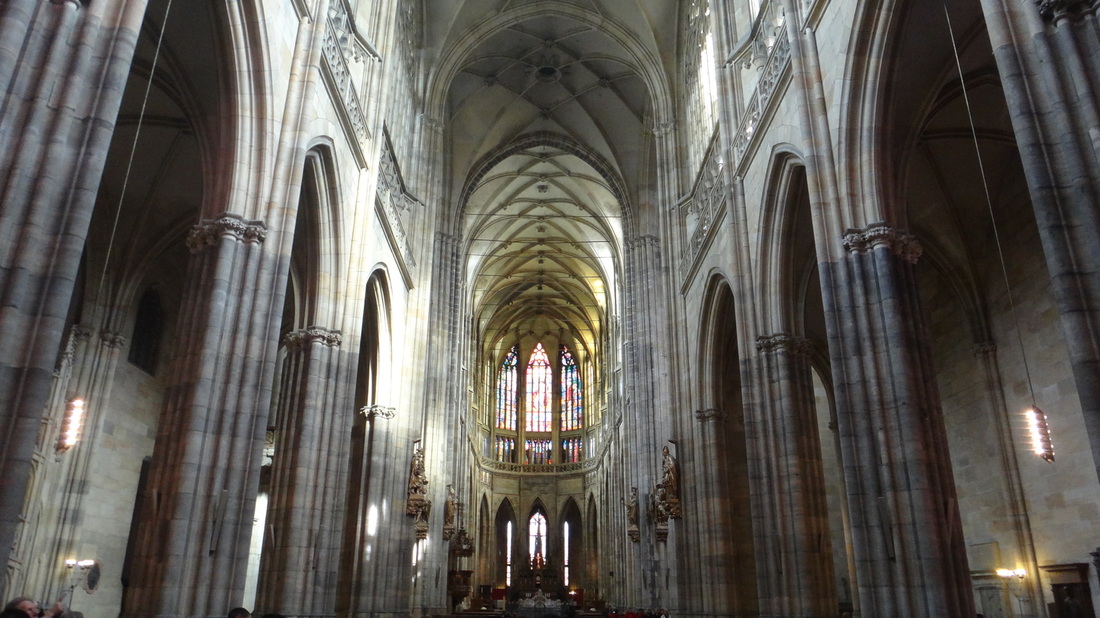



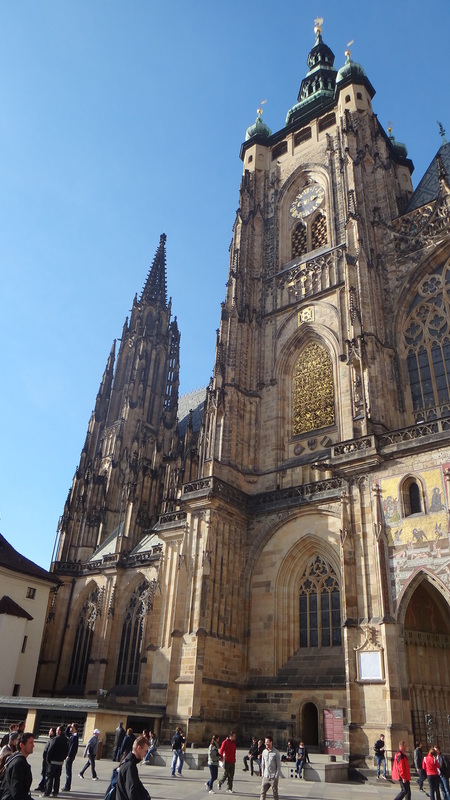



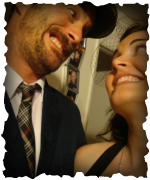
 RSS Feed
RSS Feed